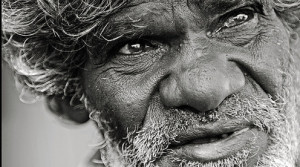In supporting Aboriginal and Torres Strait Islanders through Constitution Reform, we support ourselves
The Constitution of Australia, came into effect on 1 January 1901 and is the most powerful set of laws in the nation. It is the foundation of our political and legal systems. It united the British colonies of New South Wales, Victoria, South Australia, Queensland, Tasmania and later, Western Australia as a federation known as the Commonwealth of Australia. The Constitution tells the federal and state governments what they can and cannot do and neither governments nor politicians can change the Constitution. Our highest court, the High Court, has the final say on interpreting the Constitution and only the Australian people have the power to change it (through referendums).
When it came into effect on 1 January 1901, the Australian Constitution did not recognise Aboriginal and Torres Strait Islander Australians but it did contain several references that explicitly discriminated against Indigenous Australians. These references were removed following the 1967 Federal Referendum when over 90% of eligible voters voted YES to changes that removed those references. Currently, Aboriginal and Torres Strait Islander Australians are still not recognised or specifically mentioned in the Australian Constitution, however, the Constitution still contains references (in Sections 25 and 51) that allow the Commonwealth or State governments to discriminate against people on the basis of race. This power has been used several times by governments to enact legislation to affect only Aboriginal and Torres Strait Islander people.
While Queensland, NSW and Victorian state Constitutions recognise Aboriginal and Torres Strait Islander peoples, the Australian constitution does not.
The Australian Government honoured Aboriginal and Torres Strait Islander peoples as the ”˜the oldest continuing cultures in human history’ in the National Apology to the Stolen Generations. Yet the nation’s founding document does not mention Australia’s Indigenous peoples.
The Canadian Constitution was amended in 1982 and 1983 to recognise ‘aboriginal rights’. In Norway, in 1988 the Norwegian Parliament passed an amendment to the Constitution recognising Sami constitutional rights and New Zealand recognising Maori people as the original inhabitants.
Changing the preamble does not confer any new rights. Changing the body of the Constitution to include protection from discrimination would give all Australians the benefit of having their rights protected.
The push for constitutional reform is not about giving Aboriginal and Torres Strait Islander peoples more rights, or advantaging them over the rest of the community. It’s about recognising their special place in the history of the nation, and ensuring that the Constitution doesn’t allow government to actively discriminate against any Australian on the basis of race.
Constitutional reform will help bring in a symbolic change in the mindset of all Australians ”“ a shift in thinking about the kind of society we want all to live in. A diverse yet equitable society.
Constitutional reform will affect all Australians:
- enrich the identity of the nation as a shared identity
- improve the effectiveness of the nation’s democracy by increasing the protection of the rights of all Australians
- make significant headway towards a reconciled Australia.
Although in NAIDOC Week the movement for reform is strong and vocal yet the Aboriginal community is divided as many aboriginal elders do not support it:
Veteran Gunnai activist Robbie Thorpe told the Tracker newspaper that the current focus on constitutional reform equates to “taking us onto the back of the White Australia Policy, 100 years later”.
And Kombumerri man and academic Mary Graham warns that the government’s campaign is not to be trusted. “Constitutional recognition is a way of promising something, but with no real substance.”
Gumbaynggirr historian Dr Gary Foley believes that the government just wants “to divert our attention from the real issues”.
“Who gives a damn about whether we’re mentioned in the Australian Constitution,” Foley says. “What real difference will it make? It’s a grand token gesture and will mean nothing in the long run, so it’s a waste of time for people to be even talking about it”
Michael Anderson, leader of the Euahlayi Peoples, suggests that “the real hidden agenda of the proposed referendum [for constitutional recognition] is to coerce Aboriginal Nations and Peoples to become part of the Australian Constitution and by doing so consent to be governed. The Commonwealth government can then claim that Aboriginal Nations and Peoples have acquiesced. This is the main weapon the Crown has to counter our sovereignty movement.”
Sourced from:
https://www.humanrights.gov.au/publications/constitutional-reform-fact-sheet-recognising-aboriginal-torres-strait-islander-people
http://www.creativespirits.info/aboriginalculture/politics/constitutional-recognition-of-aboriginal-people#ixzz3fX3Vn2GC
Short URL: https://indiandownunder.com.au/?p=5214



